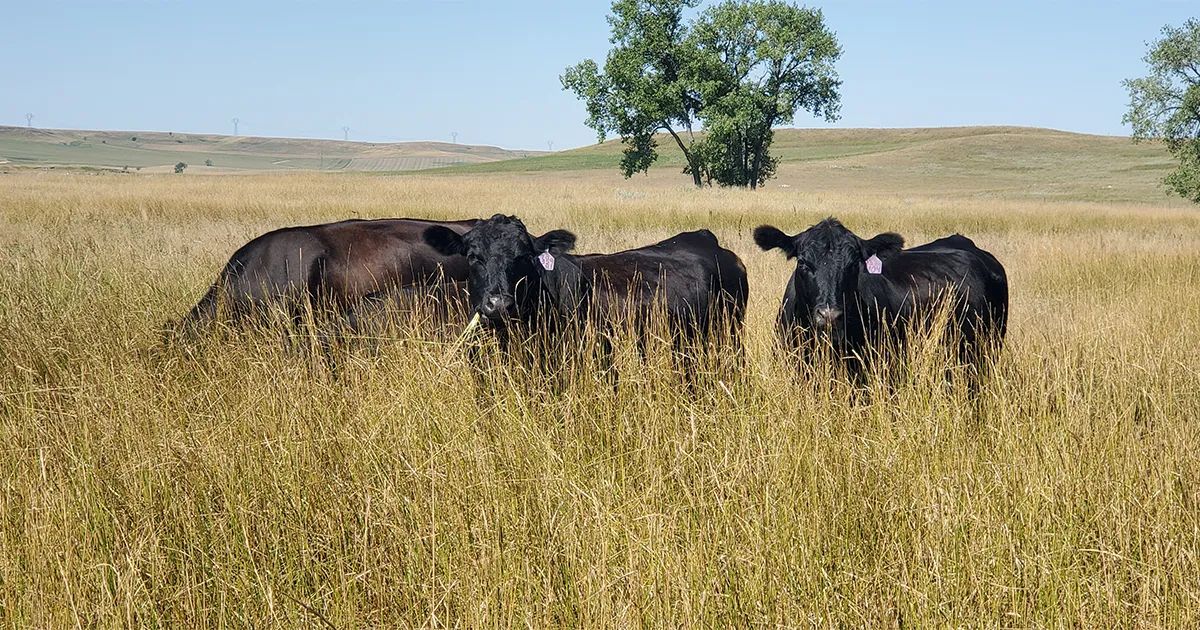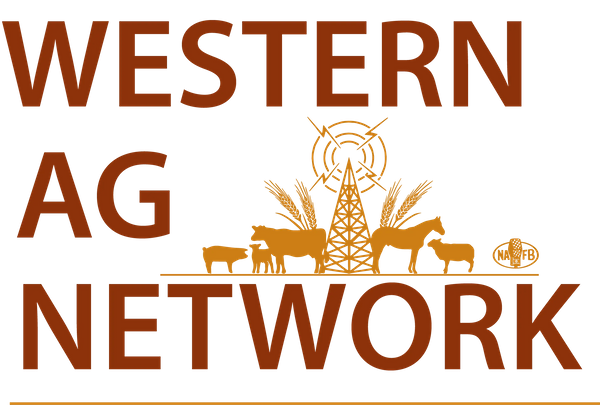
Summer Brings Raised Pinkeye Concerns in Cowherds
July 3, 2025
While grazing summer pasture is generally celebrated among cattle producers, this time of year also comes with a greater incidence of pinkeye in cattle as the summer progresses.
Pinkeye is an infection that causes inflammation of and irritation to the surface of the eye (cornea) and the tissue on the inside of the eyelid (conjunctiva), explains Jake Galbreath, North Dakota State University Extension veterinarian and livestock stewardship specialist. It is often caused by bacteria (Moraxella bovis and Moraxella bovoculi); however, Mycoplasma species and viral pathogens like infectious bovine rhinotracheitis and bovine viral diarrhea can also be responsible. If left untreated, pinkeye can lead to blindness and can spread within the herd, resulting in decreased productivity and increased economic loss.
The eye is armed with natural barriers to protect against infections, just like skin is meant to protect against infectious agents that may be encountered daily. Additionally, infectious bacteria are normally present on the surface of the eye or nasal passages. When natural barriers are broken or irritated, the risk of infection increases. Environmental factors like blowing dust, ultraviolet light and physical trauma from grazing coarse forages or tail switching when crowded can cause eye irritation and inflammation, breaking the natural barrier. Stress from heat or transport can also weaken the immune system and increase risk of infection.
Flies are a main factor in the spread of pinkeye, says Dr. Galbreath. Face flies are attracted to and feed on eye secretions, while also spreading infection from animal to animal. Thus, controlling fly populations is of utmost importance. NDSU Extension specialists and animal scientists have reported on the importance of proper timing and duration of fly control. Pest control can be expensive, so knowing fly type and density to apply control methods at the most effective time and using the most effective method is critical. Fly control is just one management aspect that can impact incidence of pinkeye in herds.
“Providing shade from UV light, reducing dust in pens and managing pastures to avoid overgrazing and grazing around coarse vegetation can all limit irritation and trauma to the eye,” says Lacey Quail, NDSU Extension livestock management specialist at the North Central Research Extension Center.
The first signs of pinkeye occur 12 to 72 hours after exposure and typically consist of watery eyes or face staining from excess tear production. This can be subtle and easily overlooked. Eye irritation leads to squinting or holding the eye shut. Cattle may rub affected eyes against posts or feeders, potentially worsening damage. As the infection progresses, a cloudy spot or halo may appear in the center or around the edges of the eye, respectively. Further progression can lead to an ulcer that can be raised above the surface of the eye or caved in as the cornea “melts” away. If ulceration occurs, permanent damage or blindness is likely. This progression can take place over just a few days, so early intervention is extremely important. Records of affected cattle should be kept so that any potential retained breeding stock can be evaluated. Significant vision impairment can impact breeding success, particularly in bulls.
Identifying and treating pinkeye early in the course of disease is important and is reason for closely checking cattle in pasture and dry lot environments, according to Dr. Galbreath.
Some cattle are more susceptible to infection than others. Youngstock are at greater risk for irritation from vegetation as well as from environmental stressors like heat. Calves have a less developed immune system than cows, so they may be more susceptible to infection, and cattle with white around the eyes are more affected by UV light. Any underlying factor increasing stress or inhibiting the immune system can make cattle more susceptible to infection. Trace mineral status is important to support a healthy immune system, and timely vaccination against pinkeye pathogens can also help prevent infection
In some cases, infection may not progress past the point of increased tear production and mild inflammation; however, these cattle can still spread infection throughout the herd through flies, so affected cattle should be separated until fully healed, notes Dr. Galbreath.
Pinkeye infections often require treatment, and producers should select the proper medications and administration in consultation with their veterinarian. Label directions for dose, injection site and withdrawal periods must be strictly followed. Antibiotics can help eliminate bacterial infection, and anti-inflammatory medications can help relieve irritation and improve comfort. Topical eye medications can be beneficial, but are often impractical as they require multiple treatments every day.
“Protecting the affected eye from sunlight and dust by applying a patch over the eye, suturing the eye closed or suturing the third eyelid over the eye can help with healing,” says Dr. Galbreath.
While treatment success is highly variable depending on the cause and severity of disease, early intervention increases the likelihood of success.
Vaccination is another tool available to help reduce the risk of pinkeye infection, and both commercial and autogenous vaccines are available. Autogenous vaccines are manufactured based on culture samples from a specific area. Working with a veterinarian can help determine what species of bacteria are prevalent in a herd to develop a targeted vaccine program. Always follow vaccine directions on administration, handling, storage and boostering.
More guidance around livestock health can be found at https://www.ndsu.edu/agriculture/ag-hub/ag-topics/livestock.
Source: NDSU










